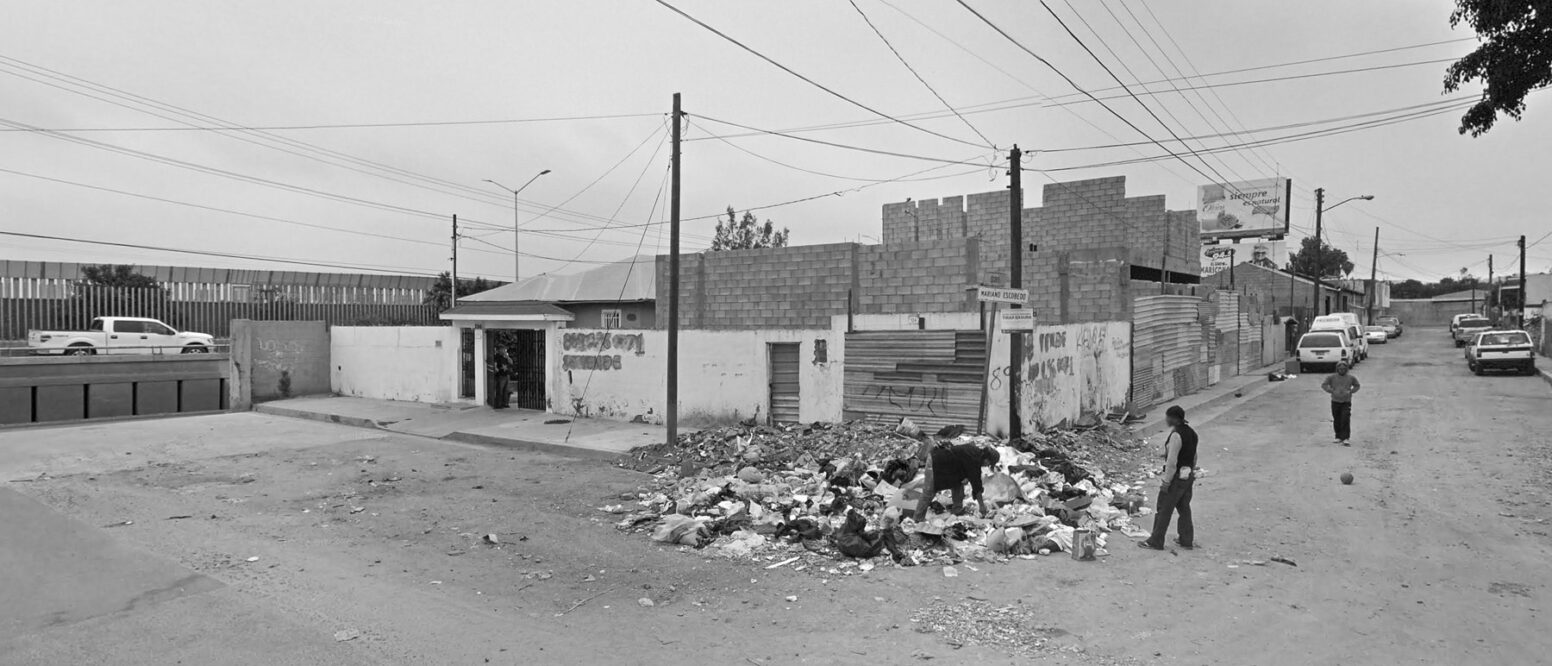There is a magazine based in Tijuana that is printed north of the border, in the San Diego area, and then distributed south of the border in the major cities of Baja California. This has nothing to do with printing convenience or quality, but rather with avoiding reprisals from organized crime. Its name is Zeta Magazine. Throughout its troubled history, its editorial team has received numerous threats and attacks for their investigations into political corruption and narco activities. Its death toll stands at four.

Mariano Escobedo, Tijuana (May 2017). Individuals rummaging through garbage.
Héctor Félix Miranda (co-founder and editor) wrote satirical articles targeting government officials. He was assassinated in 1988 on his way to work by two bodyguards of Jorge Hank Rhon, the son of a former Mexico City mayor. The guards were later convicted of the murder, but Jorge Hank Rhon was never charged with the assassination and went on to become mayor of Tijuana (from 2004 to 2007).
In 1997, Tijuana Cartel gunmen attempted to assassinate Jesús Blancornelas (co-founder) after he published a photo of local drug lord Ramón Arellano Félix. Blancornelas’ driver and bodyguard were killed in the same attack.

Avenida Miguel F. Martinez, Tijuana (December 2015). Individuals likely being taken into custody.
In 2004, Francisco Ortiz Franco (co-founder and contributing editor) was killed by masked gunmen in a drive-by shooting in full view of his son and daughter after he reported that drug traffickers had false identification cards from the Attorney General’s Office.
According to Reporters Without Borders, Mexico ranked 128th out of 180 countries in the 2023 World Press Freedom Index. In the past 10 years, 72 journalists have been murdered. 32 are still missing.
“I feel remorse for having created Zeta. After losing three colleagues, I believe the price has been too high. I would have liked to retire a long time ago […] [but] I cannot allow drug traffickers to think that they were able to crush Zeta’s spirit, and our readers to believe that we are afraid.”
— Jesús Blancornelas (1936-2006), ZETA Magazine co-founder and editor
“Every time a journalist self-censors, the whole society loses.”
— Adela Navarro Bello, ZETA Magazine director

Avenida Del Pacifico, Tijuana (September 2019). Promenade in proximity of the border fence.
 Nicola Moscelli (Taranto, 1980) is a photographer and documentarist based in the Netherlands and Italy. Using his own photographs as well as archival material, he creates visual narratives focused on the environment from an anthropological perspective, with the aim of analyzing its identity, historical and cultural legacies. His works have been published on platforms such as Urbanautica, Der Greif (Guest-Room curated by Christof Wiesner & Aurélien Valette), Fotograf Magazine, Discorsi Fotografici, and C41 Magazine. ‘Dead End’ is his first long-term visual project, soon to be published as a book by Penisola Edizioni.
Nicola Moscelli (Taranto, 1980) is a photographer and documentarist based in the Netherlands and Italy. Using his own photographs as well as archival material, he creates visual narratives focused on the environment from an anthropological perspective, with the aim of analyzing its identity, historical and cultural legacies. His works have been published on platforms such as Urbanautica, Der Greif (Guest-Room curated by Christof Wiesner & Aurélien Valette), Fotograf Magazine, Discorsi Fotografici, and C41 Magazine. ‘Dead End’ is his first long-term visual project, soon to be published as a book by Penisola Edizioni.




